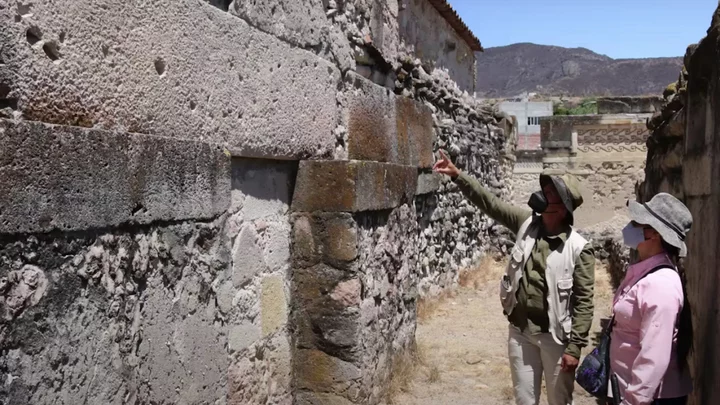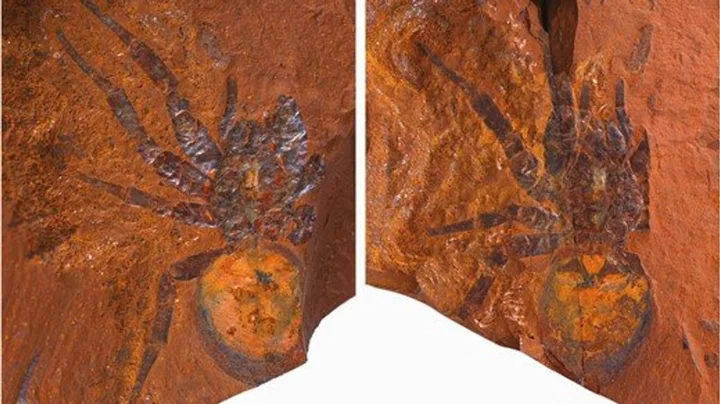Just when you thought 2023 was already going pretty badly, an “entrance to the underworld” has been found under a Mexican church - so, that can't be a good omen. It is, however, a very interesting find: the ancient structure was once believed to be an opening to hell and it was discovered in the site of Mitla near Oaxaca. It consists of a labyrinth leading underground used frequently by the Zapotec culture, who lived in the area for around 2200 years until the Spanish conquests in 1521. While the structure has its origins much earlier, the site was expanded by the Zapotecs and it was used extensively until a Church was later built over it after they left the area. Sign up to our free Indy100 weekly newsletter Around the late 16th century CE, after the Spanish had welcomed themselves to the Americas, a Catholic church and other structures were plonked on top of the site. Traditionally, the ancient Zapotecs believed the ruin to be a doorway to the world of the dead, and it’s thought that the entrance to the passages could be through the main altar of the church. Teams from the Mexican National Institute of History and Anthropology (INAH), the National Autonomous University of Mexico (UNAM), the Association for Archaeological Research and Exploration and the ARX Project all collaborated on the findings. They used geophysical scanning to uncover the complex of tunnels. However, perhaps the most significant discovery was an area measuring around 16 to 26 feet below the ground which could be a large chamber. It’s an exciting development, and as only the first round of surveys has taken place this is just the beginning. Project Lyobaa: Revealing the Underworld of Mitla, Oaxaca www.youtube.com The ARX Project, one of the grounds behind the discovery, released an announcement saying: “In 1674, the Dominican father Francisco de Burgoa described the exploration of the ruins of Mitla and their subterranean chambers by a group of Spanish missionaries. Burgoa’s account speaks of a vast subterranean temple consisting of four interconnected chambers, containing the tombs of the high priests and the kings of Teozapotlán. “From the last subterranean chamber, a stone door led into a deep cavern extending thirty leagues below ground. This cavern was intersected by other passages like streets, its roof supported by pillars. According to Burgoa, the missionaries had all entrances to this underground labyrinth sealed, leaving only the palaces standing above ground,” it continued. Have your say in our news democracy. Click the upvote icon at the top of the page to help raise this article through the indy100 rankings.
Just when you thought 2023 was already going pretty badly, an “entrance to the underworld” has been found under a Mexican church - so, that can't be a good omen.
It is, however, a very interesting find: the ancient structure was once believed to be an opening to hell and it was discovered in the site of Mitla near Oaxaca.
It consists of a labyrinth leading underground used frequently by the Zapotec culture, who lived in the area for around 2200 years until the Spanish conquests in 1521.
While the structure has its origins much earlier, the site was expanded by the Zapotecs and it was used extensively until a Church was later built over it after they left the area.
Sign up to our free Indy100 weekly newsletter
Around the late 16th century CE, after the Spanish had welcomed themselves to the Americas, a Catholic church and other structures were plonked on top of the site.
Traditionally, the ancient Zapotecs believed the ruin to be a doorway to the world of the dead, and it’s thought that the entrance to the passages could be through the main altar of the church.
Teams from the Mexican National Institute of History and Anthropology (INAH), the National Autonomous University of Mexico (UNAM), the Association for Archaeological Research and Exploration and the ARX Project all collaborated on the findings.
They used geophysical scanning to uncover the complex of tunnels. However, perhaps the most significant discovery was an area measuring around 16 to 26 feet below the ground which could be a large chamber.
It’s an exciting development, and as only the first round of surveys has taken place this is just the beginning.
Project Lyobaa: Revealing the Underworld of Mitla, Oaxaca www.youtube.com
The ARX Project, one of the grounds behind the discovery, released an announcement saying: “In 1674, the Dominican father Francisco de Burgoa described the exploration of the ruins of Mitla and their subterranean chambers by a group of Spanish missionaries. Burgoa’s account speaks of a vast subterranean temple consisting of four interconnected chambers, containing the tombs of the high priests and the kings of Teozapotlán.
“From the last subterranean chamber, a stone door led into a deep cavern extending thirty leagues below ground. This cavern was intersected by other passages like streets, its roof supported by pillars. According to Burgoa, the missionaries had all entrances to this underground labyrinth sealed, leaving only the palaces standing above ground,” it continued.
Have your say in our news democracy. Click the upvote icon at the top of the page to help raise this article through the indy100 rankings.









